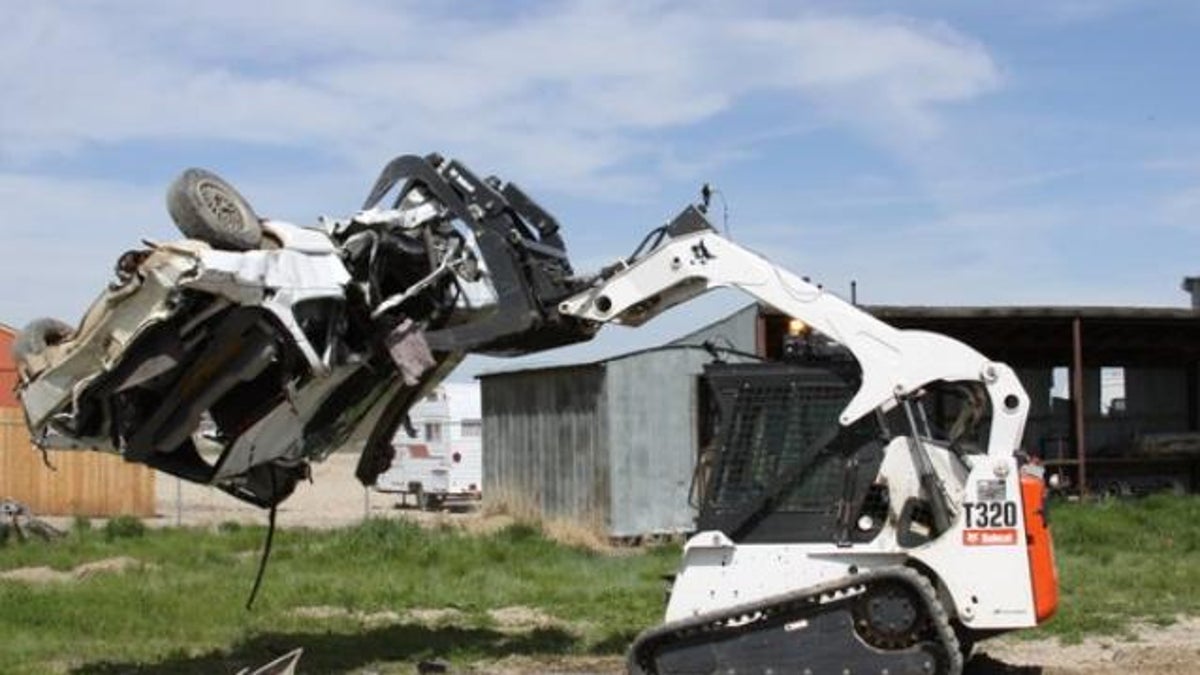Qinetiq robo-loaders heading to Fukushima
Powerful remote-controlled loaders may help clear the way for robots to work at Japan's crippled Fukushima nuclear plant.

Bobcat loaders can be converted to unmanned car-wrestlers in minutes with a Qinetiq kit.
Robots and Bobcat loaders from Qinetiq North America have arrived in Tokyo, and workers are training with them before being deployed to the crippled Fukushima Daiichi nuclear plant, which continues to pose a serious radiation threat.
The Virginia-based defense contractor sent 20,000 pounds worth of equipment to Japan this week, including kits that can turn loaders into remote-controlled bulldozers in minutes.
A Qinetiq Talon robot is being equipped with radiation-hardened cameras for deployment to Fukushima.
One of the biggest obstacles to getting the Fukushima crisis under control is the continuing radiation threatening workers. This might be a perfect opportunity for robots to help out, but operator Tokyo Electric Power Company (TEPCO) didn't have its own bots to deploy.
Japan's Nuclear Safety Technology Center sent its Moni Robo A, a 5-foot-tall radiation-detecting robot developed by Mitsui Engineering & Shipbuilding, to the plant. But debris from the March 11 tsunami and explosions that damaged buildings have prevented it from being used, TEPCO said in an IDG News report.
From Denver, Bobcat sent T300 loaders that are powerful enough to lift cars, and Bobcat staff in Japan have completed training on how to control them from laptops. Qinetiq also sent its Robotic Applique Kits, which can convert Bobcat loaders to unmanned vehicles in 15 minutes.
"You can attach anything to them, from bulldozer parts to hooks, to move debris," said Qinetiq spokeswoman Jennifer Pickett, who added that the machines should be at the plant site next week.
The kits allow the loaders to be remote-controlled from more than a mile away, and can provide audio and video feeds.
Related links
• Where are the robots in Japan's nuclear crisis?
• From Tokyo to California, radiation tracking gets crowdsourced
• Roundup: Japan reels from earthquake, nuclear crisis
Qinetiq also sent two of its Talon robots, which are portable, tracked sensing and reconnaissance machines equipped with chemical, biological, radiological, nuclear and explosive detection kits. They can also relay audio and video feeds.
Two Qinetiq Dragon Runner robots are in Japan as well. Weighing only 14 pounds, they are smaller and designed to explore trenches, tunnels, and debris piles.
Qinetiq's Dragon Runner can perform reconnaissance inside sewers and trenches.
TEPCO staff are training on them and the Talon bots. Pickett says Qinetiq may send more robots to Japan in cooperation with the U.S. Department of Energy, which is monitoring radiation in the air and on the ground. The DOE has also sent 40 staff members and more than 17,000 pounds of equipment to Japan, according to an Associated Press report.
The DOE's Idaho National Laboratory, meanwhile, is preparing a Talon with radiation-hardened cameras for use at the Fukushima Daiichi plant. The robot will be turned over to the DOE next week for shipping, according to a lab spokeswoman.
Hopefully next week will see some robot action at Fukushima.

